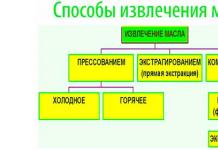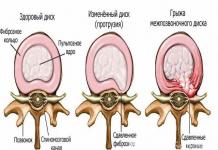Somewhat further in this direction, another concept has advanced - "social constructionism", developed over the past 25 years by the American social psychologist K. Gergen and his rather numerous followers.
In his book Toward a Transformation in Social Knowledge (1982), summarizing the discussions about the crisis of the dominant positivist paradigm in social psychology and the proposed alternatives, he formulated the following five propositions, which, in his opinion, could form a general metatheoretical basis for the future paradigm.
1. Knowledge about social life should be considered not as a "reflection" of external reality, but as a "transformation", the transformation of experience into a linguistic reality, a "linguistic ontology".
Social constructivism 361
2. Human behavior should be considered not as a consequence of some immutable laws, programs, but as a result of a number of arbitrary, free, autonomous decisions made by him.
3. Knowledge about social behavior (norms, rules, etc.) and knowledge about this knowledge should be considered not as a process of accumulation, but as a process of endless historical revision, reinterpretation, depending on the changing socio-cultural context.
4. Theory, including in social psychology, is not just a systematization of knowledge, but a means of transforming reality.
5. Knowledge cannot be value-free. Problems of ethics (moral debate) should play an increasing role in the study of human behavior.
Based on these provisions, Gergen formulates what he calls "sociorationalist metatheory." Unlike the traditional theory, it proceeds from the fact that it is not the internal processes occurring within the individual consciousness that produce what is called knowledge, but the social process of communication. “Rationality is generated precisely within the process of social exchange” Gergen concludes by urging social psychologists “to abandon the erroneous practice of research as testing hypotheses in an experiment and think about how to put methods at the service of intellectual expression, and the expression of thought at the service of one’s vision All these positions together form what Gergen calls "social epistemology", already claiming the status of the "second revolution in psychology" (the first was cognitive).
The essence of this revolution, according to Gergen, is the transformation of the famous thesis of R. Descartes: "Cogito ergo sum" ("I think, therefore I exist") into "Communicamus ergo sum" ("We communicate, therefore I exist"). From this follow the most important consequences not only for social psychology, but also for other social sciences. First, the main field of research is language, discourse (method of presentation, evidence, etc.). Secondly, "communities of interlocutors, participants in a conversation" become the main object of research. Thirdly, there is no need to search for so-called universal patterns, principles, etc. . Thus, a radical reorientation of social psychology from psychology and even sociology to linguistics takes place, and the thesis formulated at the beginning of the century by the Swiss linguist F. de Saussure is being realized: "The science that studies the life of signs in society is possible (conceivable); it could be part of
362 Quo vadis? Social psychology at the turn of the century
social psychology and, consequently, general psychology; I will call it semiology (from the Greek "semeyon" - a sign). Semiology will show what constitutes signs and what laws they obey. Semiotics (the science of signs), as is known, became one of the most significant and rapidly developing sciences in the second half of the 20th century, turned into a field of interdisciplinary research, in which psychology, linguistics, philosophy, cultural studies, history, etc. meet.
An excursion into the history of semiotics shows that de Saussure relied on the ideas of W. Humboldt, the founder of the philosophy of language. For Humboldt, language is not only a product of people's communication, but also an activity, a manifestation of the energy of the spirit, not only a means of communication, but also a means of expressing and gaining truth. Humboldt's classic formula about thinking is well known: "I do not think, but thinks in me (es denkt)". For Humboldt, language is a manifestation of the "spirit of the people", culture as an integral organic unity, the focus of which is ethical principles. This position as a whole was characteristic of the humanistic worldview of that time.
As we can see, one of the postulates of "social constructivism" calls for bringing the problems of ethics into the sphere of socio-psychological research, and in 1994 Gergen devotes an entire chapter to them (!). He seeks, on the one hand, to dissociate himself from the "romanticism" of the 18th-19th centuries with their consideration of the ethical foundations in religion, or their natural rootedness in human nature (innateness), on the other hand, to prevent accusations of excessive "modernism", moral and historical relativism . What is the position of social constructionism on the issue of the ethical aspect of social interaction?
He does not look for universal principles, does not recognize moralizing (ie, condemnation of actions from a moral point of view), proceeds from the fact that the principles of goodness cannot dictate specific actions, regardless of the place and time of action. This, according to Gergen, does not mean the rejection of "moral discourse". But what remains? He replies: “By addressing the practical aspects of morality as a social achievement, we are faced with new questions: for example, what linguistic forms can be used to achieve satisfactory goals in conditions of stress or conflict? What linguistic resources do people have in such conditions? Can these be increased? resources?" .
Social constructivism __________________363
Constructivism, in Gergen's words, "is not in itself an attempt to establish or enforce a code of ethics, whether on a psychological or philosophical level. Rather, it 'brackets the problem of moral principles', encouraging instead an exploration of the practices in human relationships that enable them to achieve life." which they consider "moral". The question is not "what is good?", but, given the heterogeneity of people's lives, "what in their relations can contribute to the advancement towards mutually acceptable conditions?". Therefore, if, as a citizen, a supporter such a point of view and may be disgusted with Nazism, then, as a constructionist, he must explore the historical aspect of Nazism, which determined the conviction of one social group in its superiority over another [ibid.] In this case, the subject is discursive practice: the exchange of opinions, the presence of different points view, methods of proof, etc. Thus, the linguistic form in which social relations.
The same approach is characteristic of constructionists and to the study of the psychological reality itself - emotions. Here, too, one must pay tribute to constructionism: emotions themselves are declared to be social relations. However, even in this case, it is not relations through emotions that are studied, as forms of their expression, but forms of expressing emotions in language: ways of defining "anger", "joy", etc. To paraphrase the famous James formula "I am not crying because I am sad, but I am sad because I am crying," following the constructionist, one can say: "I am angry not because I am unfairly offended, but because I determined this act in a language I know as unfair."
The future will show how justified are the predictions that social constructionism will be able to grow into a full-fledged paradigm. For the time being, we can confine ourselves to stating his merit in the fact that the ethical aspect of social interaction begins to timidly, with numerous reservations, penetrate into Western social psychology.
In Western social thought, the concept of Gergen develops in line with those trends that are united by the common prefix "post": postmodernism, postcommunism, postcapitalism and even posthistorism. Attempts to synthesize these trends into a new alternative to existing paradigms are reflected in yet another trend - critical social psychology.
social constructivism
social constructivism- sociological and psychological theory that studies the processes of socio-psychological construction of social reality in human activity. social reality and social interaction of individuals are considered as a set of thoughts, ideas and values and are not reduced to material conditions. The emergence of social constructivism is associated with the name of the Soviet psychologist L. S. Vygotsky.
Social reality is not predetermined by the social activity of individuals; involvement in social relations takes place simultaneously with the creation by a social agent of the qualities and characteristics of reality. Knowledge is a product of social and cultural construction. In the process of interaction between individuals, communication and other forms of social relations, the values and meanings of the elements of reality are assumed. The process of education and upbringing is by its nature the social activity of the individual, social norms, the meanings of the elements of social reality are not comprehended in passive perception, but are constructed in the process of social interaction. Social constructivism denies the existence of natural laws in the social, economic and political spheres. Social actors are constituted in the situation and the nature of their relationships.
Social constructivism focuses on the formation of social structures in the process of individual-personal learning that accompanies interpersonal interaction, while social constructionism considers the formation of social structures in collective and group social processes.
Social constructivism is widespread in educational psychology, pedagogy, and applied in learning theories. Social constructivism, along with behaviorism, social pedagogy, and constructivism, is one of the main theories of child development that emerged from Jean Piaget's concept of cognitive development.
Constructivism and social constructivism
In modern constructivism, the social aspects of social constructivism are considered in various currents of constructivism - social constructionism (identified with social constructivism) and other types of constructivist theories. Chiari (Chiari) and Nuzzo (Nuzzo) distinguish two types of constructivist theories - epistemological and hermeneutical constructivism. Raskin (Jonathan D. Raskin) identifies three theories of constructivism - personal constructivism (personal constructivism), also called the theory of personal construct, radical constructivism and social constructionism.
Notes
see also
Wikimedia Foundation. 2010 .
See what "Social constructivism" is in other dictionaries:
constructivism- CONSTRUCTIVISM (from lat. constructio construction) is a direction in epistemology and philosophy of science, which is based on the idea of the activity of a cognizing subject, which uses special reflective procedures in the construction ... ... Encyclopedia of Epistemology and Philosophy of Science
Not to be confused with social constructivism. Social constructionism is a sociological theory of knowledge developed by Peter Berger and Thomas Luckman in their book The Social Construction of Reality ... Wikipedia
- (from lat. constructivus associated with construction, construction). Constructivism (art) is a direction in art. Constructivism (mathematics) is an abstract science that studies constructive constructions [clarify]. ... ... Wikipedia
Or a social concept is a product of a particular culture or society that exists solely because people agree to act as if it exists, or agree to follow certain conventional rules. To the obvious ... ... Wikipedia
- (Western). The stylistic tendencies of culture, which took shape in the aesthetic program of culture after the imperialist war, were closely connected in their origin with the growth and development of finance capital and its machine industry. Origin... ... Literary Encyclopedia
A direction in fine arts, architecture and design of the 20th century, which set as its goal the artistic development of the possibilities of modern scientific technical progress. In architecture, it closely adjoins rationalism and functionalism. Formed in the 1910s... Big Encyclopedic Dictionary
BUT; m. Direction in art of the 20th century. (in architecture, painting, theatrical, applied arts, as well as in literature), which affirmed the principles of emphasized utilitarianism and strived for economy of forms and the exposure of their technical basis. ◁… … encyclopedic Dictionary
Constructivism- a direction in the fine arts, architecture and design of the 20th century, which set as its goal the artistic development of the possibilities of modern scientific and technological progress. In architecture, it closely adjoins rationalism and functionalism. ... ... Architectural Dictionary
Creative direction of engineering and technical European architecture in the 20s and early 30s. XX century, whose representatives considered the design the main means of architectural expressiveness, sought to reveal in the external appearance of the building its ... ... Construction dictionary
Radical constructivism is an epistemological approach, according to which knowledge fundamentally cannot correspond to objective reality or “reflect” it, since the only “real world” available to an individual is ... ... Wikipedia
Books
- Artifact ontology. Interaction of natural and artificial components of the life world, . Ontology answers the question `what exists?`. The authors of the collection `Ontologies of artifacts: the interaction of `natural` and `artificial` components of the life world`explore…
- Artifact ontology. Interaction of "natural" and "artificial" components of the life world, Stolyarova O.E.. Ontology answers the question "what exists?". The authors of the collection "Ontologies of artifacts: the interaction of" natural "and" artificial "components of the life world" explore ...
Social constructivism is a theory of cognition and learning that argues that the categories of knowledge and reality are actively created by social relationships and interactions. Based on the work of theorists such as L. S. Vygotsky, it focuses on the personal construction of knowledge through social interaction.
Constructivism and social constructivism
Constructivism is a learning or meaning theory that explains the nature of knowledge and the learning process of people. He argues that people create their own new knowledge in the process of interaction, on the one hand, between what they already know and believe, and the ideas, events and actions with which they are in contact, on the other. According to the theory of social constructivism, knowledge is acquired through direct participation in the learning process, and not through imitation or repetition. Learning activities in constructivist settings are characterized by active interaction, inquiry, problem solving, and interaction with others. The teacher is a guide, facilitator and challenger who encourages students to ask questions, challenge and formulate their own ideas, opinions and conclusions.
The pedagogical tasks of social constructivism are based on the social nature of cognition. Accordingly, approaches are proposed that:
- provide students with the opportunity to have specific, contextually relevant experiences through which they search for patterns, raise their own questions, and build their own models;
- create conditions for learning activities, analysis and reflection;
- encourage students to take greater responsibility for their ideas, to ensure autonomy, to develop social relationships and empowerment aimed at achieving goals.
Background of social constructivism
The educational theory under consideration emphasizes the importance of culture and context in the process of knowledge formation. According to the principles of social constructivism, there are several prerequisites that cause this phenomenon:
- Reality: Social constructivists believe that reality is built through human activity. The members of society together invent the properties of the world. For a social constructivist, reality cannot be discovered: it does not exist prior to its social manifestation.
- Knowledge: For social constructivists, knowledge is also a human product and is socially and culturally constructed. People create meaning through their interaction with each other and with environment in which they live.
- Learning: Social constructivists view learning as a social process. It not only occurs within a person, but is not a passive development of behavior that is formed external forces. Meaningful learning occurs when people engage in social activities.

The social context of learning
It is represented by historical events inherited by students as members of a particular culture. Symbol systems such as language, logic, and mathematical systems are learned throughout a student's life. These symbol systems dictate how and what to learn. Of great importance is the nature of the student's social interaction with knowledgeable members of society. Without social interaction with more knowledgeable others, it is impossible to get the social meaning of important symbol systems and learn how to use them. So, young children develop their thinking abilities by interacting with adults.

learning theory
According to L. S. Vygotsky, the founder of social constructivism, knowledge is formed through social interaction and is a common, not individual experience.
Learning theory suggests that people create "meaning" from educational experiences by learning with others. This theory states that the learning process works best when learners function as social group, which co-creates a shared culture of artifacts with shared meaning.
Within the framework of this theory, the leading role is assigned to the activity of people in the learning process, which distinguishes it from other educational theories, mainly based on the passive and receptive role of the student. It also recognizes the importance of symbol systems, such as language, logic and mathematical systems, which are inherited by students as members of a particular culture.
Social constructivism suggests that learners learn concepts or create meaning from ideas through their interaction with other ideas, their world, and through interpretations of that world in a process of actively constructing meaning. Learners create knowledge or understanding through active learning, thinking and working in a social context.
According to this theory, the student's ability to learn depends to a large extent on what he already knows and understands, and the acquisition of knowledge should be an individually tailored building process. Transformational learning theory focuses on the often needed changes that are required in the learner's bias and worldview.

Constructivist philosophy emphasizes the importance of social interactions in the construction of knowledge.
According to constructivism, the formation of each of us occurs through our own experiences and interactions. Each new experience or interaction is fed into our schemas and shapes our perspectives and behaviors.
CONSTRUCTIVISM VS SOCIAL CONSTRUCTIVISM
ACT is the story of an experiment so casually begun that it took a quarter of a century to bring it to the necessary purity and understand what its true meaning was. It all started very badly - with an unfortunate use of the expression "social construction of scientific facts." Now it is clear to us why the use of the word "social" could lead to such a significant misunderstanding; two completely different meanings are intertwined in it: the type of material AND the movement of the assembly of non-social entities. But why did the introduction of the word “construction” cause even more confusion? In explaining this difficulty, I first hope to make clear why I attach such importance to this small section of the study of science. In it there was a renewal of the meaning of all the words that make up this short innocent expression: what is a fact, what is science, what is construction, and what is social. Not too bad for an experiment that was carried out so thoughtlessly!
When on idle English language something is said to be constructed, meaning that this “something” is not a mystery that appeared out of nowhere, but has a more modest, but more visible and interesting source. Usually a huge advantage of visiting construction sites is that it is an ideal vantage point to observe the connections between human and non-human actors. It is easy to amaze visitors with their feet in the mud with the sight of all the construction workers hard at work during their most radical metamorphosis. This is true not only of science, but of all other construction sites. This is most obvious to those who are at the origin of the metaphor itself, that is, the places of construction of houses and buildings created by architects, masons, urban planners, real estate agents and homeowners. The same is true for activities in the arts. "Creating" anything - movies, high-rise buildings, facts, political rallies, initiation rituals, haute couture, cooking recipes - represents a point of view that differs significantly from the official one. Thanks to her, you not only enter from the back door and get acquainted with the skills and abilities of people of practical action, but also get a rare chance to see what it is like to emerge from nothingness by supplementing any existing entity with its time dimension. And, even more importantly, when you are taken to any construction site, you experience an exciting and invigorating feeling that things could be different or might not work out- a feeling that is never so deep when meeting with the finished result, no matter how beautiful or impressive it may be.
So, the use of the word "construction" at first glance is ideally suited to describe a more realistic version of what it means for any thing. be sustainable. Indeed, in any field, the assertion that something is constructed has always been associated with an assessment of its strength, quality, style, durability, value, etc., so connected that no one would bother to report that a skyscraper, a nuclear reactor, the sculpture or car is "engineered". It's too obvious to specifically point out. The main questions are different: is the design successful? is the construction solid? how durable or reliable is it? is the material expensive? Everywhere - in technology, engineering, architecture, art, design to such an extent is synonymous real, that the question immediately turns into the following and really interesting one: Good is it designed or bad?
At first, it seemed obvious to us - scientists in the past - that if there were such construction sites to which the usual understanding of constructivism could easily be applied, then these should be laboratories, research institutes with their huge arsenal of expensive scientific tools. Science, even more than art, architecture, and engineering, demonstrates the most extreme cases of the absolute artificiality and perfect objectivity. There is no question that laboratories, particle accelerators, telescopes, national statistics, masses of satellites, giant computers and collections of samples are all artificial places whose history could be documented in the same way as the history of buildings, computer chips, locomotives. Yet there was not the slightest doubt that the products of these artificial and costly places represented the most tested, objective, and certified results ever achieved by collective human ingenuity. That is why we have taken to using the term “fact engineering” with great enthusiasm to describe the amazing phenomenon of artificiality and reality going hand in hand. Moreover, the statement that science is also constructed is just as awe-inspiring as all other "made from": we went through the back door; we learned about the skills of people of practical action; we have seen how innovations are born; we felt how risky it was; and we have witnessed a mysterious fusion of human activity and non-human entities. While watching a fairy tale film made for us by our fellow historians of science, we can watch the most incredible spectacle frame by frame: the truth is gradually being reached in breathtaking episodes without any certainty of the result. In terms of suspense, the history of science surpassed any plot that Hollywood could concoct. Science for us has become even better than just objective, it has become interesting as interesting as it was for its actors involved in its risky production. Unfortunately, the excitement quickly subsided when we realized that for other colleagues in both the social and natural sciences, the word "construction" meant something quite different from what common sense had hitherto associated with it. The words "something constructed" in their understanding meant that this "something" was not true. They seemed to have the strange notion that they were presented with an unpleasant choice: or something is real and unconstructed, or it is constructed and then artificial, unnatural, invented, made and false. Not only was such a notion impossible to reconcile with the enduring meaning of a "well-designed house," a "well-designed" computer program, or a "well-sculpted" statue, it vanished at the sight of everything we had witnessed in laboratories: there "to be invented" and "to be objective" went hand in hand. If you were to break the seamless narratives of "making the facts" into two branches, it would make the emergence of any kind of science simply incomprehensible. Facts are facts, literally. because they are made, that is, they have arisen in artificial situations. Every scientist we studied was proud of this link between design quality and data quality. This strong connection was indeed the main confirmation of the reputation. And if epistemologists could forget it, there is an etymology to remind everyone of it. We were ready to answer a more interesting question: Good or poorly constructed this scientific fact? And certainly not to be dominated by this most absurd alternative: “Choose! Either the fact is real or it is fabricated!”
Yet it has become painfully clear that if we want to continue using the word “construction,” we will have to fight on two fronts: with epistemologists who still claim that facts are “of course” not constructed, what is so much as much sense as the statement that children are not born from the womb of their mothers - and with our "dear colleagues" who apparently think that if the facts are constructed, then they are as weak as fetishes, or at least like what, how sure they are"believe" fetishists. Then it would be safer to completely abandon the word "construction" - especially since the word "social" has the same internal defect: it plunges readers into rage as steadily as the cape of a torero bull. On the other hand, for all the reasons just given, "construction" remains an excellent term. Especially useful in it is the clarity with which this concept focuses our attention on the scene of the junction of human and non-human actors. Since the whole idea of the new social theory we are inventing was to renew the understanding of both - what is a social actor and what is a fact - the main thing is still not to lose sight of the most important construction sites where this double metamorphosis takes place. . That's why I chose to do with constructivism what we did with relativism: both terms, biting as insults, have too venerable a tradition not to be raised like a glorious banner. After all, those who criticize us for relativism never noticed that its opposite would be absolutism. And those who criticize us for constructivism probably did not want to see that the opposite position, if the words make sense at all, is fundamentalism.
On the one hand, it seems easy enough to restore a clear meaning to the much-maligned term "construction": we just have to use the new understanding of the social set out in the previous chapters of this book. Just as a "socialist" or "Islamic" republic becomes the opposite of a republic as such, adding the adjective "social" to the word "constructivism" completely reverses its meaning. In other words, "constructivism" should not be confused with "social constructivism". When we say that a fact is constructed, we simply mean that we are explaining a solid objective reality by involving various entities whose assembly may not succeed; on the other hand, the expression "social constructivism" means that we substitute what this reality is made of, some another substance the "social" out of which it is "really" built. The explanation of the heterogeneous origin of buildings is replaced by another, in which everything is built from homogeneous social matter. To put constructivism back on its feet, it suffices to note that as soon as "social" again denotes association, the very idea of a building built of social substance disappears. For any construction to take place at all, non-human entities must play a major role, which is what we wanted to say from the very beginning, using this rather harmless word.
But apparently this rescue operation was not enough, since the rest of the social sciences seem to share a completely different understanding of this term. How could this happen? Our mistake was this: because we never shared the idea that the word "construction" could mean reduction to only one type of material, we were too slow to develop antibodies against the accusation that we reduce facts to "mere construction." Since it was obvious to us that social "construction" meant a renewed attention to the many heterogeneous realities involved in the construction of this or that state of affairs, it took us years to adequately respond to the absurd theories with which we were superficially associated. Despite the fact that constructivism was for us a synonym growth realism, our colleagues in social criticism hailed us as having finally shown that "even science is gone! It took me a long time to understand the danger of the term, which in the hands of our "best friends" clearly meant a kind of revenge on scientific facts for their strength and reflected their claims to truth. They seem to mean that we are doing to science the same thing that they - to their great pride - did to religion, art, law, culture and everything that everyone else believes in, that is, they turned it all into dust, showing his "done". For someone who has never been trained in critical sociology, it is hard to imagine that people can use causal explanation in their own discipline as evidence that the phenomenon they are explaining does not really exist, let alone associate the artificiality of the construction with deficit. reality. Constructivism involuntarily turned into a synonym for its opposite - deconstructivism.
No wonder that our enthusiasm when we showed the "social construction of a scientific fact" was met with such fury by the actors themselves! For physicists, it is far from the same thing whether to have complex discussions about "black holes" - or, as it is portrayed, "struggle for influence among physicists." It is far from all the same to the religious soul whether to turn to God in prayer or to pray, as they say, simply "personalizations of the Society." For a lawyer, it is not the same thing to follow the Constitution and succumb to the pressure of powerful lobbies lurking in the shadow of the law. The couturier is not all the same whether to cut tight and shiny corduroy or - as they say - to make "social differences" visible. It's not the same thing for a cultist to be associated with the existence of a deity and hear about yourself worshiping a wood fetish. The substitution of the social for another substance is perceived by each actor as a catastrophic loss that must be resolutely resisted - and rightly so! However, if the word "social" is used not to replace one type of substance with another, but, on the contrary, to develop connections that make the state of affairs strong and lasting, then in the end one can listen to such a different social theory.
How is it possible, we wondered, such a discrepancy in the interpretation of the main tasks of social science? That is why it gradually became clear to us that there is something deeply flawed, not only in the standard philosophy of science, but also in the standard social theories used to explain what is happening in areas other than science. This is what made the ACT researchers appear at first glance either too critical—they are accused of attacking "even" the facts and not "believing" in "Nature" or "external reality"—or too naive: they believe in the activity of "real things" "outside of us". In reality, ACT only tried to make changes in the use of the critical repertoire in general, simultaneously abandoning both the word "nature" and the word "society", invented to reveal "behind" the social phenomenon what "really happens". However, this meant a complete reinterpretation of the experiment that we initially carried out unintentionally when we tried to explain scientific production sociologically. After all, a lot can be said in defense of red rags in the hands of nimble bullfighters, if in the end, thanks to them, they managed to tame a wild beast.
From the book In the Shadow of the Silent Majority [The End of the Social] author Baudrillard Jean…or the end of the social The dynamics of the social are not clear and definite. What characterizes modern societies - its growth or decay? In other words, are they characterized by socialization or consistent desocialization? The answer depends on how
From the book Introduction to Social Philosophy: A Textbook for Universities author Kemerov Vyacheslav Evgenievich§ 1. Stages of the social process Of course, the selection of such large forms was made by historians and philosophers based on some objective grounds, so the “large-format” image of the history of society contained fairly accurate characteristics
From Weber's book in 90 minutes (just about the complex) the author Mityurin D§ 1. Facets of the social process The usual way to represent, describe, think and explain being - human or natural - can be something like this. There are people or things (people and things). Between them arise, exist, some connections change. Between them
From the book Philosophy: A Textbook for Universities author Mironov Vladimir VasilievichThe theory of social action However, the behavior of the individual is also studied by psychology, and in this connection the question arises: what is the difference between the psychological and sociological approaches to the study of individual behavior? Weber answered this question at the very beginning of his
From the book Morning of the Magicians author Bergier Jacques2. Correlation between the biological and the social Already Aristotle called man a "political animal", thus noting his inclusion both in the sphere of the biological and in the sphere of the social. Later, questions arose before scientists: what is the relationship between these
From the book Philosophy of History author Panarin Alexander Sergeevich From the book Sociology [Short Course] author Isaev Boris Akimovich2.2. Historiosophical constructivism of R. Descartes Descartes, the founder of modern philosophy, not only proclaimed the thesis "Cogito ergo sum" - "I think, therefore I exist", but also absolutized it. A man remains a man as long as he thinks, otherwise
From the book Introduction to Philosophy the author Frolov Ivan5.1. The essence of social deviation
From book Selected works author Weber Max2. The unity of biological and social Natural and social in man Representing a social being, man is at the same time a part of nature. From this point of view, people belong to the higher mammals, forming a special species of Homo sapiens, and therefore,
From the book Theory of Justice by John Rolls2. The concept of social action 1. Social action (including non-intervention or patient acceptance) can be oriented towards the past, present, or expected future behavior of others. It can be revenge for past grievances, protection from danger in the present.
From the book Adept Bourdieu in the Caucasus: Sketches for a biography in a world-system perspective author Derlugyan GeorgyII. Motives of social action Social action, like any other behavior, can be: 1) goal-oriented if it is based on the expectation of a certain behavior of objects in the external world and other people and the use of this expectation as "conditions" or
From the book ENLIGHTENING EXISTENCE author Jaspers Karl Theodor79. THE IDEA OF SOCIAL UNITY We have already seen that, despite the individualistic features of justice as fairness, the two principles of justice provide an Archimedean point of view for assessing existing institutions and the desires and hopes they give rise to. These
From the book Matrix of the Apocalypse. Europe's last sunset author Baudrillard JeanTransformations of social capital According to sound reasoning, there was nothing surprising in this accidental discovery of the scientific and intellectual incarnations of the perestroika politician and well-known nationalist Yuri (aka Musa) Mukhamedovich Shannbov. As elsewhere in the period
From the author's book3. Existence in the struggle against the integrity of history and against the will to non-historicity. - Thinking of history as a whole, whether as a cipher, or in immanent pictures of its unity, brings it in the form of some closed objectivity: a single huge
From the author's bookThe End of the Social The dynamics of the social are not clear and definite. What characterizes modern societies - its growth or decay? In other words, are they characterized by socialization or consistent desocialization? The answer depends on how you understand
From the author's bookThe end of the social (continued) 3. The social certainly existed, but now it is no more. It existed as a coherent space, as the foundation of reality. Social relation, production of social relations, social as a dynamic abstraction,
In the philosophy of science and epistemology, constructivism is a direction based on the idea of the activity of the cognizing subject in constructing an idea of the surrounding world, or "an approach according to which any cognitive activity is a construction" , regardless of whether we are talking about building an image of perception or building a reasoning.
Jean Piaget is considered one of the founders of constructivism in both epistemology and psychology.
Considering the development of the child's intellect, he postulated that cognitive development is a constant reorganization, restructuring of mental processes, which is due to both biological maturation and the experience that the child receives when interacting with the environment.
In fact, at each stage of development, the child constructs a certain understanding of the world around him and, as a result, may encounter a mismatch between the experience that he has and what is found in the environment during active interaction with it.
This mismatch becomes the engine of further development, which is a balance between the processes of assimilation and accommodation.
As J. Bruner succinctly summarized this position, "knowledge of the world is created, not discovered" .
According to American methodologists, theories that are conditionally classified as constructivist can be grouped into at least three approaches:
- radical constructivism,
- social constructivism
- the theory of personal constructs, or "constructive alternativeism".
radical constructivism.
He claims that absolutely any knowledge is not just acquired or assimilated, but actively constructed by the cognizing subject, and the ultimate goal of construction, as J. Piaget emphasized, is adaptation to the environment in the course of interaction with it.
At the same time, knowledge cannot and should not fully correspond to reality, it must be consistent with the task of adaptation. And although it makes no sense to talk about the correspondence of the perceived world to the real one, those "the operations by which we build our experiential world can be determined to a large extent, ... knowing them ... can help in more efficient construction."
Cognitive processes are rooted in the organism, which, in turn, is a product of biological evolution. It is precisely because of this rootedness that one can formulate a position - "All action is knowledge, all knowledge is action" .
social constructivism.
It is assumed that the personality itself, constructing its understanding of the world, is in turn constructed by the society in which it develops, the language and cultural context of development.
“The construction of an image of external reality is, first of all and mainly, the actualization of one or another part of the already existing image of the world, and only secondly is it a process of refinement, correction, enrichment, or even a radical restructuring of the actualized part of the picture of the world or the image of the world as a whole.”
constructive alternativeism.
J. Kelly postulates that a person organizes and streamlines his subjective experience based on an individual system of bipolar scales - "constructs" that are formed and refined throughout life and perform the function of anticipation. The more such scales, the more "cognitively complex" the personality and the more options for understanding reality it can offer.
The term "constructive alternativeism" emphasizes that there are infinitely many alternative interpretations of events in the surrounding world as different people and by the same person. Each person, according to Kelly's metaphor, essentially acts as a scientist, building (constructing) his own understanding of these events.
"Task - Tool".
Modern cognitive psychology of attention is increasingly turning to the concept of a task as an explanatory one. The need to rely on this concept is substantiated by the description of phenomena, for example, delays and errors of attention in conditions of rapid and brief presentation of stimuli, in attempts to explain which in strictly controlled experiments all possible explanations other than “system reconfiguration” or “task switching” were consistently excluded.
It is the analysis of the tasks solved by the visual system that is the basis of the perception mechanisms that act as tools of the psyche that have evolved to solve these problems.
“In order to understand how thought works, a cognitive scientist must know what tasks our cognitive and neural mechanisms are designed to solve.”
Cognitive "tools" are formed in evolution to solve certain problems of adaptation, and therefore, to explain the structure of a certain "tool", it is necessary to establish
- firstly, for the solution of what task it is intended,
- secondly, why it is designed to solve this particular problem, and not some other one.
At the same time, despite the ideas of task determination and evolutionary conditionality of the laws of the cognitive system, the modular approach to cognition as such does not in all converge with the fundamental provisions of constructivism: the formation of individual cognition is considered as a sequential unfolding of a genetically determined system of modules, which does not imply any interaction between them, or restructuring in the system under the influence of the experience gained.
The very concept of a task in this approach is limited to the tasks of adapting the subject as a representative of a biological species.
The constructivist approach to cognition assumes that the subject does not simply use the products of the mechanisms that have developed in his brain or in the cognitive system, but builds an idea of the environment in which he will have to act, right in the course of solving the problems facing him.



































